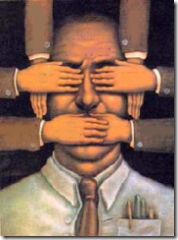
Research suggests that being surrounded by red can make people’s work more accurate, while blue can make people more creative. Red is good for enhanced memory, proofreading skills, detail-oriented tasks. Blue is good for brainstorming, novel ideas, imagination
In a similar post, we saw that in close martial arts matches, competitors wearing red were awarded ~13% more points compared to if they had a blue uniform. Perhaps red for athletes, as for animals, subconsciously symbolizes dominance.
A 2008 study showed that men considered women in photographs with red backgrounds or wearing red shirts more attractive than with other colors.
Colors may affect cognition because of the moods they engender. Red represented danger or mistakes (e.g fire alarm, emergency signs), and blue symbolized peace and openness (e.g. skies, water).







